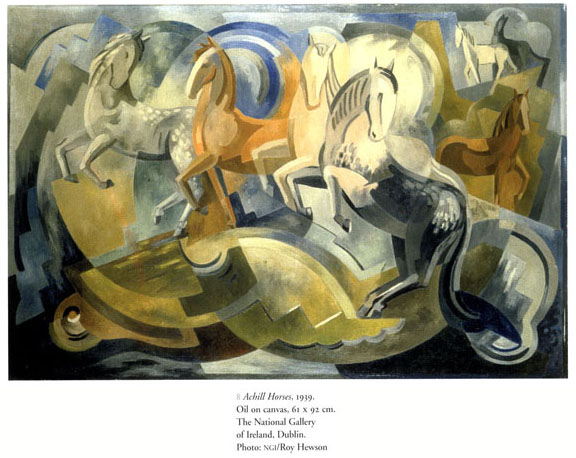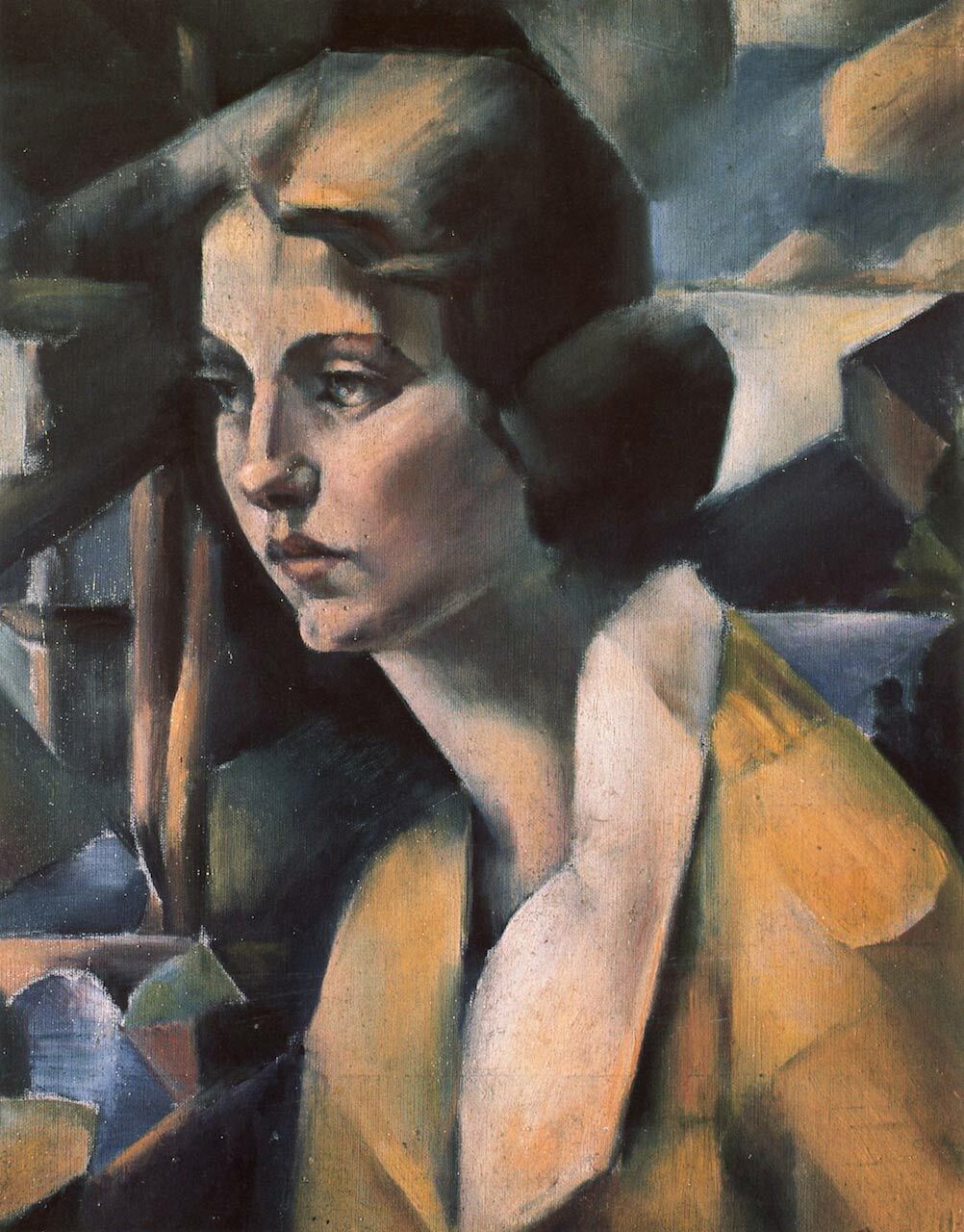Who are the best Irish artists?, part III, Mainie Jellett
Mainie Jellett, 1897-1944, born in Dublin to a well-to-do Protestant family of Huguenot origin. She studied with William Orpen in Dublin and then moved to England, where she developed an attractive figurative style. But soon thereafter her work turned abstract when she studied Cubism in Paris in the early 1920s. She was part of what might be the most significant (and rapid) revolution in the history of art, although the Irish branch of that revolution usually receives little attention. She and Evie Hone led the introduction of modern art to Ireland, and arguably still represent the peak of that tradition. “Like James Joyce, who had ‘not become modern to the extent that he ceased to be Irish’, Jellett made modernism Irish.” (source)
She blended cubism on top of Christian devotional ideas and also structures and images from the Book of Kells and other medieval Celtic sources. At its best, her work is just perfect — you would not wish for the curves or angles or colors to go any other way. Here is a classic Jellett image, also drawing on some Chinese influences:
Here is her painting “Abstract Crucifixion”:
For a point of contrast, see her homage to Fra Angelico. Her Anglo-Irish background led to some hostility, and her deliberate invocation of specifically Catholic images is sometimes interpreted as a project for Irish cultural reconciliation.
Here is a less typical but still fine representational work:
I can’t bring myself to call her the greatest Irish artist ever, as perhaps she is not tops in breadth or multiplicity of perspectives, but she was one of the very best and I do not tire of viewing her work. She is the equal of many of the better-known modernist artists from other countries and she excelled also in watercolors and sketches. Her life was cut tragically short by pancreatic cancer.


